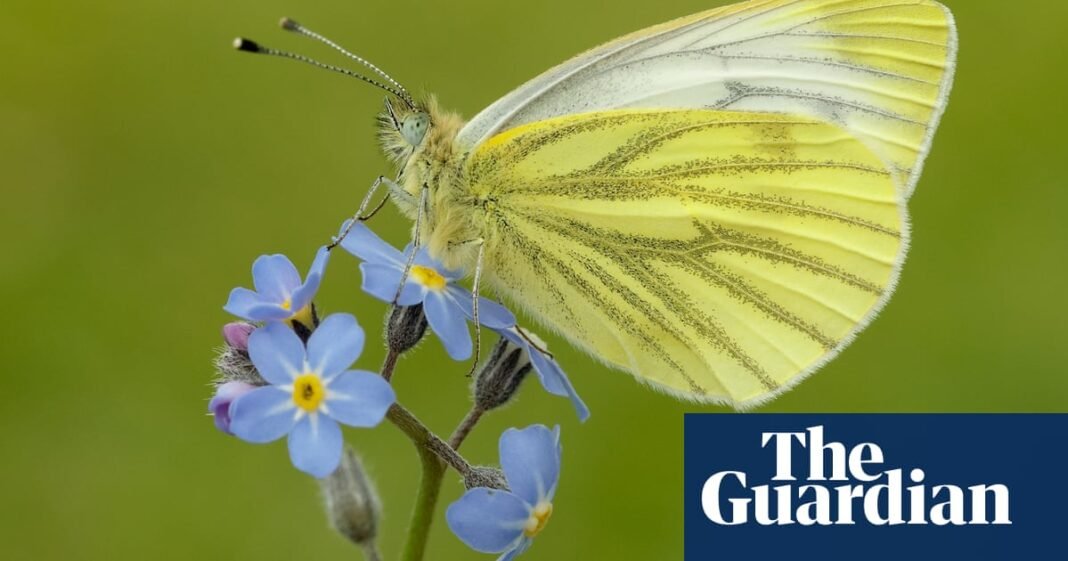UK Butterfly Population Faces Alarming Decline: What You Need to Know
Britain’s butterfly population saw its fifth worst summer in nearly 50 years, with over half of the nation’s native species in long-term decline. Experts warn that human actions are the primary cause of this biodiversity crisis, highlighting an urgent need for habitat restoration and conservation efforts.
Lead: Last summer, the United Kingdom experienced a significant decline in butterfly populations, marking the fifth worst summer since the official recording began in 1976. This alarming trend, highlighted by the UK Butterfly Monitoring Scheme (UKBMS), revealed that more than half of the 59 native butterfly species in Britain are in long-term decline. Notably, species such as the small tortoiseshell and small copper have faced their worst years on record, prompting urgent calls for conservation action. Understanding the causes and implications of these declines is crucial as experts emphasize the human impact on these vital pollinators.
Understanding the Butterfly Decline
The current state of butterfly populations in the UK has raised several critical questions about environmental health and biodiversity. Here are some important points:
– **Current Status**: Over 50% of Britain’s native butterfly species are declining, with 31 species in long-term decline.
– **Worst Years Recorded**: Nine species, including the once-common small tortoiseshell and small copper, experienced their worst recorded years in 2023.
– **Voluntary Monitoring**: Volunteers across more than 3,000 sites in the UK actively count butterfly populations, providing invaluable data to track these alarming trends.
What Contributes to the Decline?
Experts like Dr. Richard Fox, head of science at Butterfly Conservation, have identified human actions as the driving force behind these declines. Key contributing factors include:
– **Habitat Destruction**: Urbanization and agricultural expansion have led to the destruction of critical wildlife habitats.
– **Pesticide Use**: Industrial-scale pesticide application has contributed to worrying declines in butterfly populations, putting additional pressure on already struggling species.
– **Climate Change**: Changing weather patterns mean that butterflies, whose populations are already vulnerable, are less able to cope with poor weather conditions.
Dr. Fox remarked, “We have destroyed wildlife habitats, polluted the environment, and we are changing the climate. That means that when we have poor weather, these already-depleted butterfly populations are highly vulnerable and can’t bounce back like they once did.”
Statistics and Observations from the Field
The UKBMS findings paint a clear picture of the butterfly situation:
– **Second-Worst Summer**: The summer of 2024 was marked as the second worst since 1976, with 51 out of the 59 native species seeing a reduction in numbers compared to the previous year.
– **Species at Risk**: The decline of the small tortoiseshell butterfly is particularly troubling, as this species was once ubiquitous in gardens. Its caterpillars thrive on stinging nettles, a common plant, making its decline all the more perplexing.
Recent Conservation Efforts and Successes
Despite the sobering news, there is hope on the horizon. Conservationists have made some notable progress:
– **Revived Species**: Conservation efforts have successfully revived critically endangered species. For example, the Large Blue butterfly has shown remarkable recovery due to targeted habitat restoration.
– **Public Awareness**: The Butterfly Conservation organization is actively working to raise awareness and engage the public in conservation efforts.
Action Steps for Butterfly Conservation
As butterfly populations dwindle, experts are advocating for immediate action to create supportive environments for these essential pollinators. Here are some strategies being promoted:
– **Promote Longer Grass**: Encouraging local councils and residents to leave lawns uncut from April to September can significantly benefit butterfly populations. Scientific studies have shown that gardens with longer grass yield increased butterfly abundance.
– **Restoration and Awareness**: Dr. Fox emphasizes, “By far the best thing we can do to help butterflies is to create more habitat. This simple act can make a real, immediate difference to butterflies, moths, and other wildlife.”
How You Can Help
Individuals can play a vital role in supporting butterfly populations. Here are actionable steps anyone can take:
– **Pledge to Lawn Care**: Commit to not cutting your grass during the peak butterfly season to provide essential habitats.
– **Create Butterfly-Friendly Gardens**: Plant native flowering plants that attract butterflies and provide food sources for caterpillars.
– **Participate in Monitoring**: Get involved with local butterfly monitoring initiatives to help scientists track populations.
Conclusion: A Call to Action for Butterfly Conservation
The declining butterfly population in the UK signals a broader ecological crisis that requires immediate attention. With over half of Britain’s native species in long-term decline, it is more important than ever that individuals, communities, and local authorities take proactive measures to support butterfly habitats. Through small yet impactful actions like creating more green spaces and promoting awareness, we can contribute to reversing this trend and ensuring a prosperous future for British butterflies.
By engaging with these conservation efforts, we can help protect these delicate creatures that are vital to our ecosystem and preserve biodiversity for generations to come.
Keywords: UK butterfly population, butterfly decline, conservation efforts, habitat destruction, climate change, pollinators, butterfly-friendly gardens, ecological crisis
Hashtags: #ButterflyConservation #Ecology #Biodiversity #ClimateAction #SaveTheButterflies
Source link



